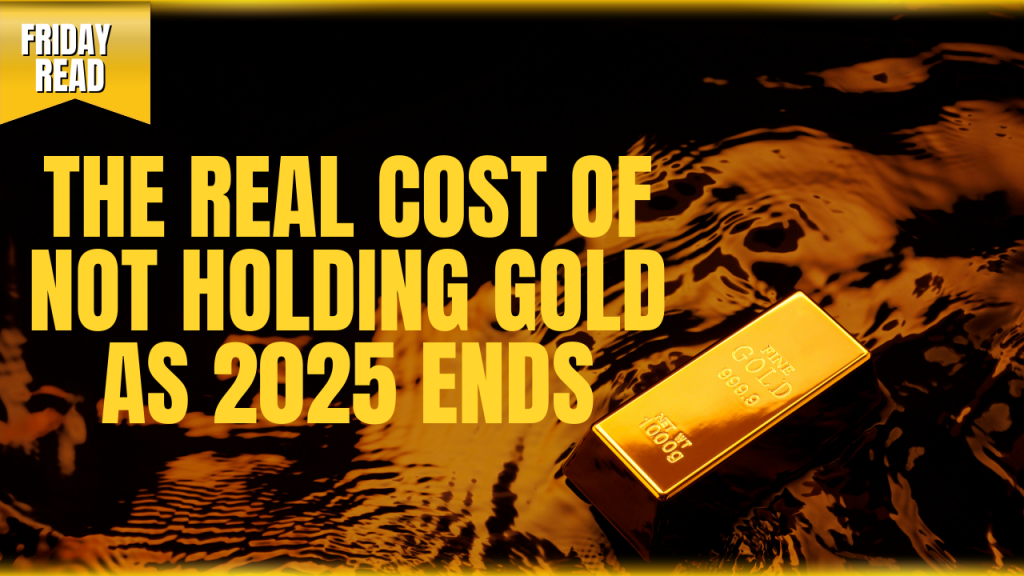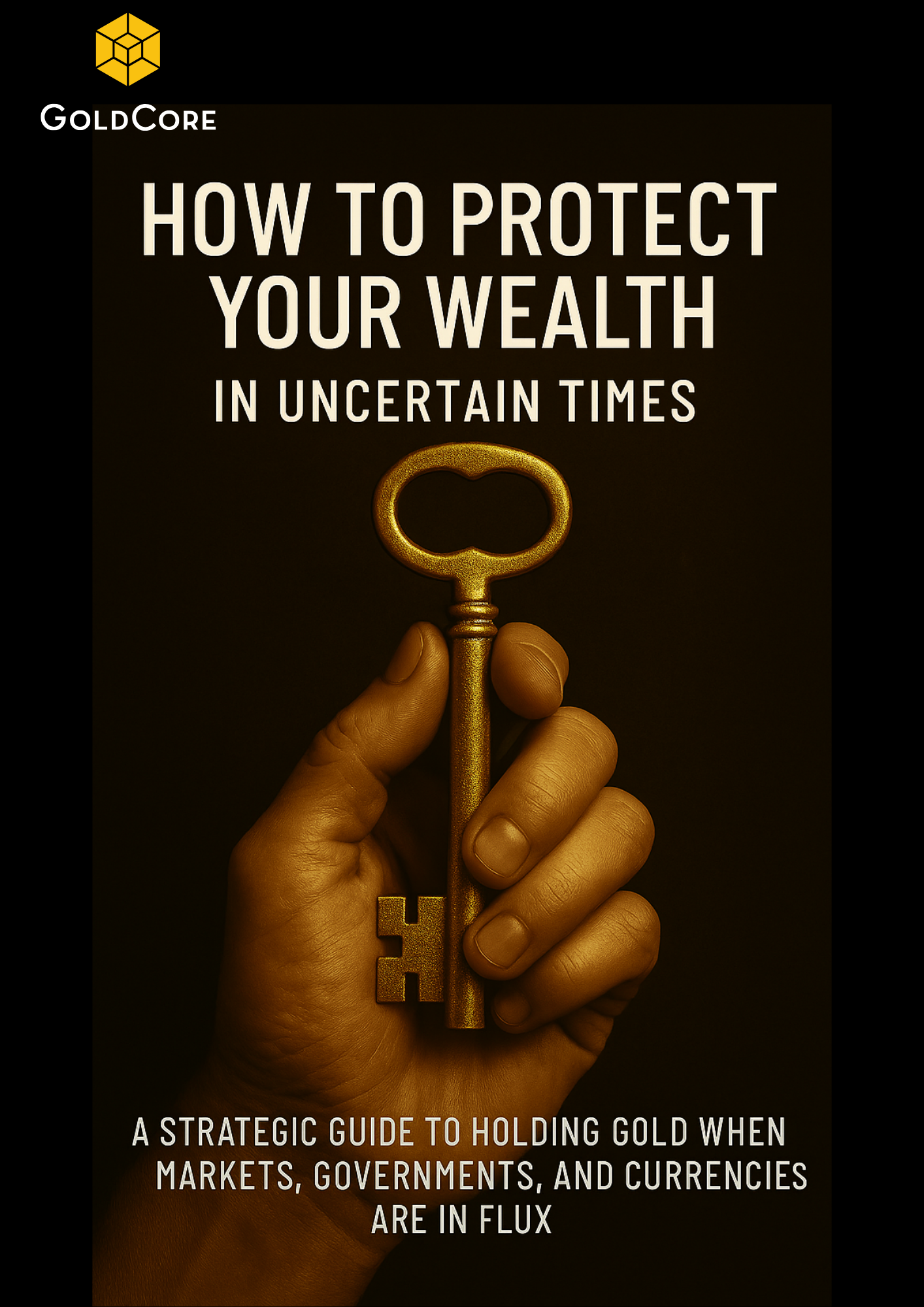
For many years the mainstream’s principal argument against gold was that it paid nothing. This was repeated often enough that it acquired the status of received wisdom. Investors were invited to observe the metal, observe the income generated elsewhere, and conclude that gold was an interesting but essentially idle asset. That view belonged to a world in which government debt was assumed to be safe, central banks behaved in ways that could be described as responsible and equity markets were not entirely dependent on a handful of technology companies. The argument looked tidy because the system appeared to be tidy.
As 2025 draws to a close, the idea that the cost of holding gold can be measured simply in forgone yield seems increasingly antiquated. Yield still exists, but what it represents has become less clear. Policy has ceased to follow any recognisable pattern. The United States is not engaged in classical fiscal stimulus. It is engaged in an improvised form of fiscal loosening structured around tax rebates for households, incentives for corporates and a willingness to adjust tariffs in whichever direction seems least politically hazardous. The Treasury Secretary has even taken to expressing a desire for a low ten year Treasury yield, a preference that markets are testing with a certain curiosity. None of this creates an environment in which the absence of yield on gold appears particularly punitive.
Why Do People Forget This About The Gold Price?
Equities have performed respectably thanks to strong margins and the ongoing story of artificial intelligence as a future profit engine. Yet much of this strength depends on a narrow group of companies. Beneath the surface consumer sentiment remains fragile and a portion of the market moves more on hope than on hard evidence. The bull case for 2026 relies on household tax relief, cheap oil and the expectation that tariffs will be less damaging. The bear case focuses on the possibility of returning inflation, the sensitivity of the market to a single large technology stock and the difficult fact that margins rarely expand forever.
Bonds have not been especially helpful either. Duration risk has become less predictable. Foreign buyers continue to diversify their reserves with greater interest in gold and less automatic reliance on Treasuries. The fiscal outlook is far from reassuring, even before the next round of corporate tax concessions takes effect. The once celebrated 60/40 portfolio, which was supposed to absorb shocks through the interplay of equity and bond risk, has spent much of the year proving that both elements can wobble at the same time.
This is where the findings from recent institutional surveys become instructive. WisdomTree’s latest analysis observes that the regime which allowed the 60/40 model to look balanced has already disappeared. It rested on low inflation, stable growth and the reliable tendency for stocks and bonds to move in opposite directions. Since 2022 these conditions have not held. Investors on both sides of the Atlantic now question whether bonds perform their traditional role at all. The question for many allocators is no longer how much fixed income they need, but whether the idea of a fixed income ballast still makes sense.
Gold’s behaviour only reinforces this shift. The asset has risen strongly even as rates have remained high. More importantly, its relationship with bond yields has altered. What was once a negative correlation has become mildly positive. WisdomTree’s researchers argue that this reflects a new understanding of gold as a hedge against fiscal imbalances rather than a simple rate trade. Rising yields are now associated with concerns about sovereign fragility, and gold rises with them. This is not a flight from volatility. It is a recognition that gold sits outside the liabilities of any government or central bank.
The flow of funds supports this interpretation. More than ten billion dollars entered gold exchange traded products in a single month this year. European investors now allocate an average of 5.7% of portfolios to gold, a share equal to their holdings of developed market sovereign debt. A significant proportion prefers ETPs over physical metal or futures contracts, largely for reasons of convenience, transparency and scalability. Analysts now refer to a 60/20/20 model that divides portfolios among equities, fixed income and real assets. It is not a radical break but a return to the idea that resilience sometimes requires holdings that are free of counterparty risk.
In this environment the traditional complaint that gold pays no income loses much of its force. The more relevant question is the cost of not holding it. That cost appears in the form of exposure to volatility in both equities and bonds, exposure to fiscal experimentation and exposure to a monetary landscape that has not fully stabilised. Gold does not promise safety in absolute terms, but it refuses to participate in the assumptions that drive modern financial assets. This has become one of its most significant attributes.
As we enter 2026 investors will continue to generate confident stories about both the upside and the downside. Yet the financial system remains heavily reliant on policy choices that are improvised and on market conditions that are uneven. In that context the opportunity cost that matters is not the yield forgone by holding gold. It is the exposure incurred by avoiding it. Gold’s strength at the end of 2025 is not rooted in enthusiasm. It is rooted in recognition. Portfolios require something that is not created by policy, not adjusted by decree and not dependent on the earnings revisions of a few dominant companies. Gold provides that, and the cost of ignoring it is becoming more evident with each passing year.
Buy Gold Coins

Buy gold coins and bars and store them in the safest vaults in Switzerland, London or Singapore with GoldCore.
Learn why Switzerland remains a safe-haven jurisdiction for owning precious metals. Access Our Most Popular Guide, the Essential Guide to Storing Gold in Switzerland here.
Receive Our Award Winning Market Updates In Your Inbox – Sign Up Here





